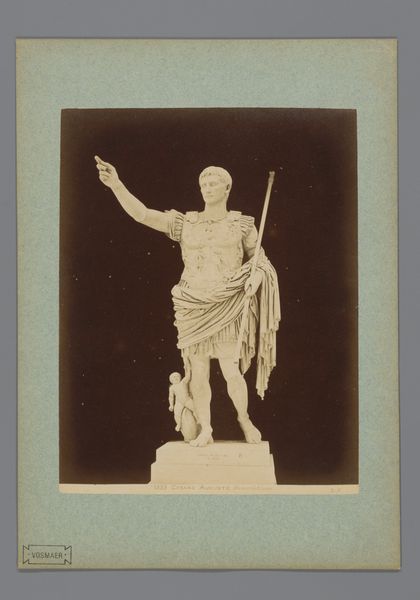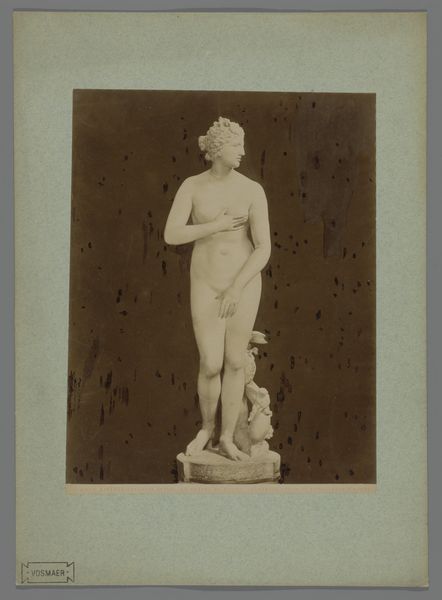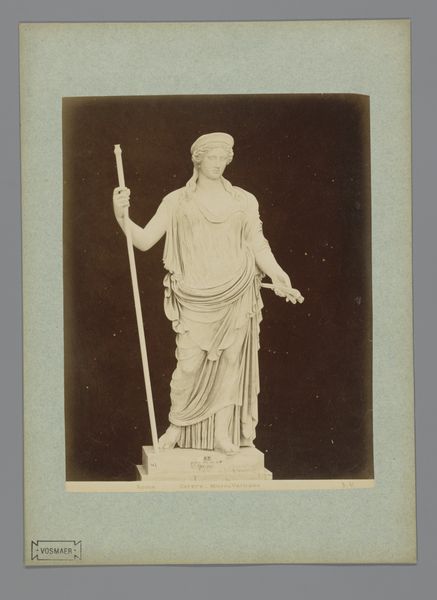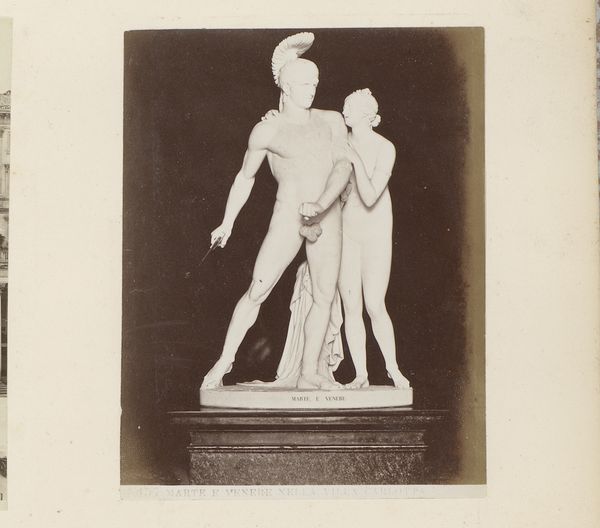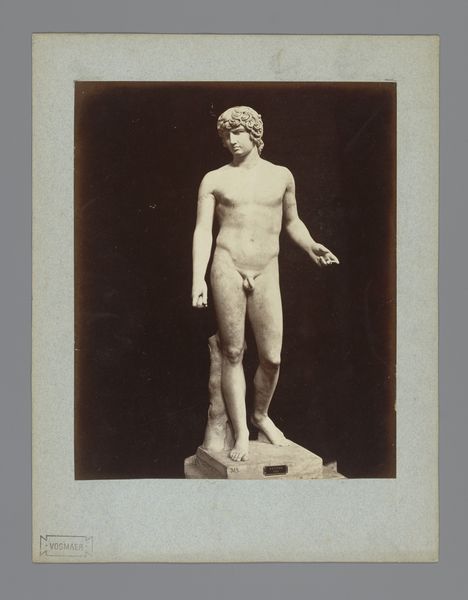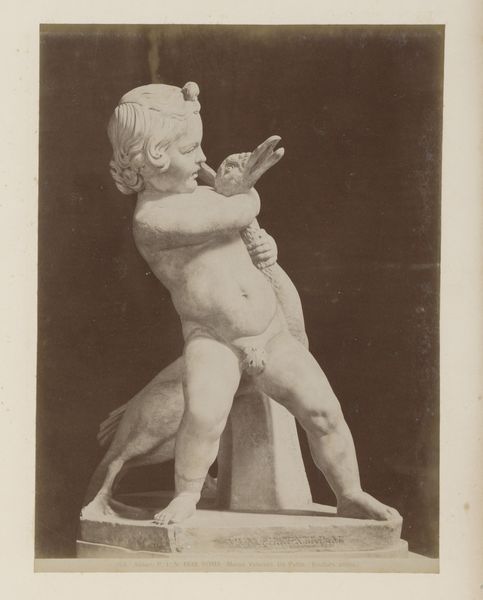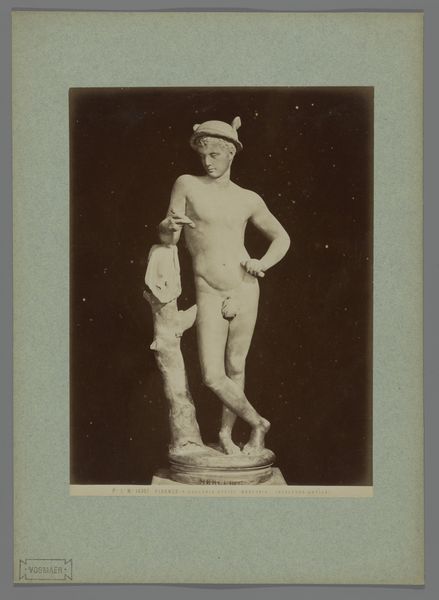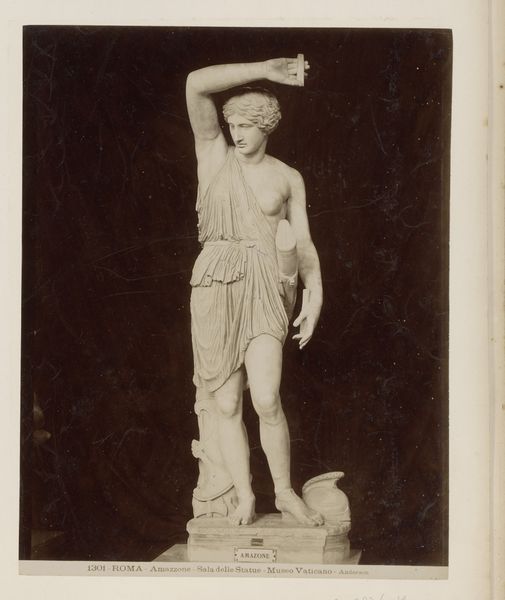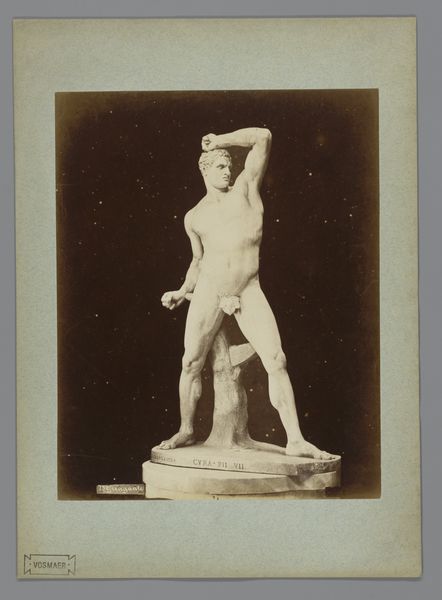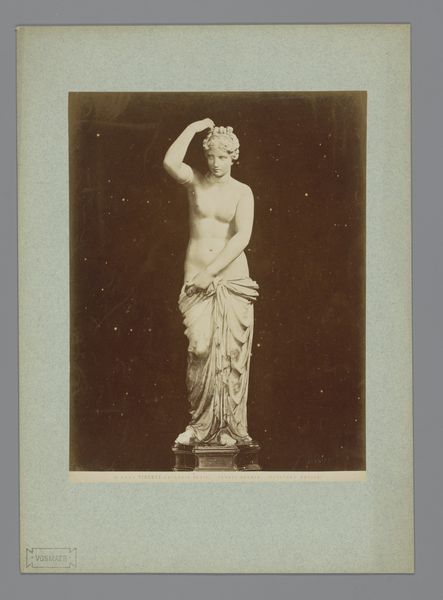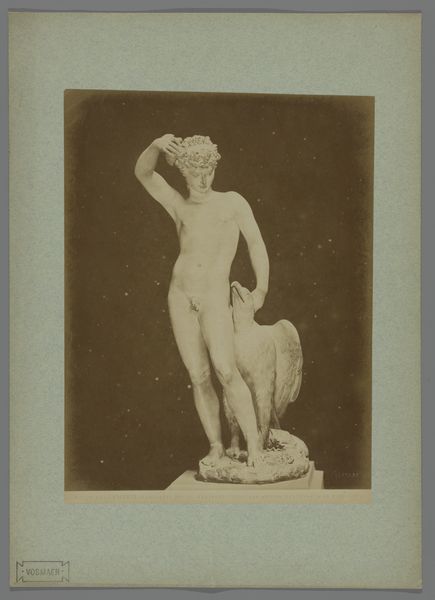
Sculptuur van Perseus met het hoofd van Medusa in de Vaticaanse Musea te Vaticaanstad, Italië 1851 - 1890
0:00
0:00
anonymous
Rijksmuseum
photography, sculpture, gelatin-silver-print
#
portrait
#
greek-and-roman-art
#
classical-realism
#
photography
#
geometric
#
sculpture
#
gelatin-silver-print
#
history-painting
#
nude
#
realism
Dimensions: height 354 mm, width 255 mm
Copyright: Rijks Museum: Open Domain
Curator: It’s really something, isn't it? It has a theatrical flair, this gelatin silver print taken sometime between 1851 and 1890 depicting the sculpture of Perseus with the Head of Medusa, originally housed in the Vatican Museums. Editor: It does! Immediately, the muted tones and the dark backdrop amplify the stark white of the sculpture, highlighting Perseus’s… triumphal yet oddly detached pose. He's casually displaying Medusa’s head like a trophy. Is it just me, or does it lack… emotion? Curator: Ah, yes, the politics of imagery are subtle here. The classical realism and the selection of this mythological scene aren't accidental. Sculptures like these often served as symbols of power, morality, and civilization in the 19th century. Perseus, the conquering hero, triumphs over chaos represented by Medusa, reinforcing the values of a society through idealized forms and heroic narratives. Editor: So, more of a political statement than pure artistry? I see him less as a hero and more as… a very handsome butcher, disconnected from the horror he's inflicted. There's beauty, undeniably, in the marble’s texture caught by the photography, and the geometric shapes defining his musculature but still… he carries that head like a new accessory! Curator: Well, remember that photographs like this one allowed the broader public to engage with classical art. As a photographic reproduction displayed in a place like the Rijksmuseum today, this challenges our notions of originality and access to culture. Who gets to see and interpret these iconic figures is a part of a larger story. Editor: Good point, how the distribution impacts perceptions, makes art democratic in ways never imagined. You have helped see how museums actively sculpt history too and how context gives it meaning that sometimes escapes me in front of art pieces like this. Curator: That is art’s power: engaging you, isn't it? It generates feelings in all their messy glory and shows historical and socio-political frameworks. Art makes us engage in conversations and maybe a little disagreement along the way isn’t that a good sign?
Comments
No comments
Be the first to comment and join the conversation on the ultimate creative platform.
